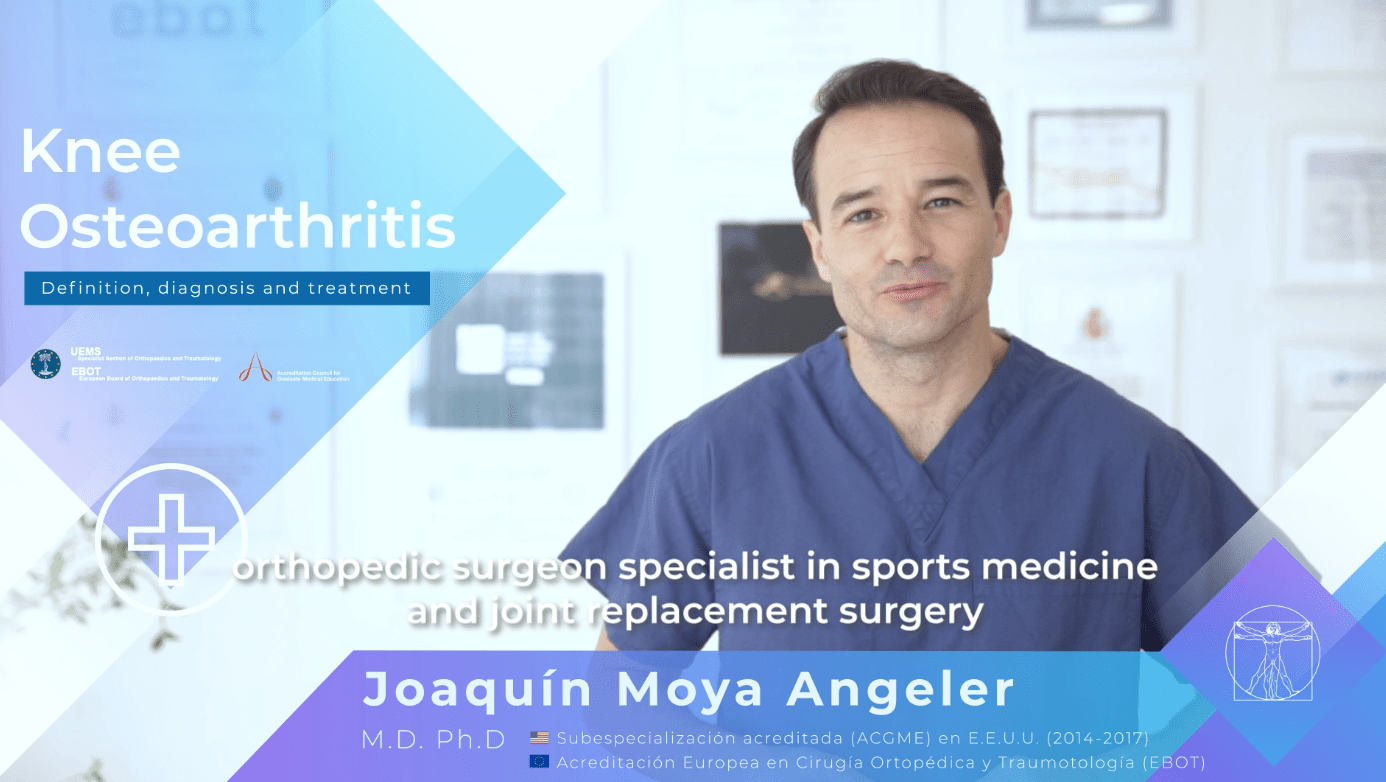
29 Jun Knee osteoarthritis
Osteoarthritis is the wear and tear of the articular cartilage. Remember that the articular cartilage is the natural coating that bones present where they connect to facilitate motion without friction.
It turns out that the integrity of this structure is of vital importance for the correct performance of our joints,
And for different reasons such as age, genetics, obesity, and previous trauma, among others, it can erode and suffer progressive wear that leads to pain and disability which is sometimes irreversible.
The diagnosis of knee osteoarthritis, in general, can be made with simple X-rays, although sometimes, especially in the early stages, it may be necessary to perform an MRI to rule out other associated injuries.
The treatment of osteoarthritis can be divided into three treatment phases ranging from the least invasive to surgery, which should always be the last resource.
The following actions could be included within the measures of the first therapeutic step:
*Weight loss.
*Relative rest.
*Avoidance of painful activities
*Occasional anti-inflammatory medication intake.
*Application of some anti-inflammatory gel or ice locally,
*And the use of a cane when necessary.
If these measures are not enough, then we move to the second phase, where injections play a major role.
An injection involves putting a medication inside the joint. And what can we inject? Well, there are three options:
*Stem cells or platelet-derived growth factors, also called PRP. The theory behind is that this regenerate cartilage and these are generally indicated in mild and moderate cases of osteoarthritis.
*Hyaluronic Acid, a viscous substance that acts as a lubricant within the joint and it is generally indicated in moderate to severe cases of osteoarthritis.
*And lastly cortisone with some local anaesthetic, which is, generally indicated in acute phases when pain is not well controlled with oral medication.
When all these measures fail, and the patient presents daily pain and disability that affects her quality of life, then we move to the third step, which is, joint replacement surgery.
And how is a knee replacement performed?
Well, what we basically do is replace the worn part of the joint with a an artificial one,
This can be done with a partial knee replacement, when osteoarthritis affects only one compartment of the knee, or with a total knee prosthesis when it affects the entire joint.
The results in general are quite good, with up to 90% of patients experiencing improvement in pain and function from three to six months after the intervention.
If you want to know more about how we perform a total or partial knee replacement check out our next video.

